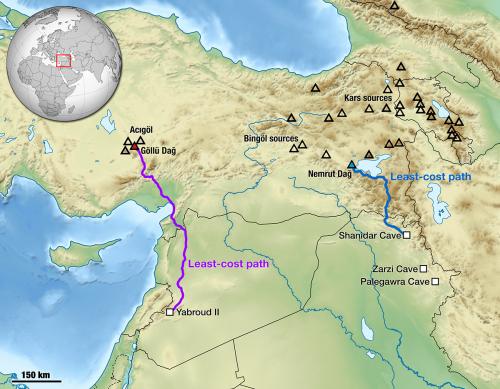
“Identifying the movement of lithic materials to reconstruct social networks has been a mainstay of research into Palaeolithic cognition and behavior, but such datasets are often predicated on studies of cherts and similar siliceous rocks, the origins of which can be difficult to establish conclusively. Yabroud Rockshelter II (YR2) in southern Syria contained stratified Middle and Upper Palaeolithic layers and, therefore, played a key role in defining the Levantine Palaeolithic. One obsidian scraper was found in Layer 4, which, via techno-typological correlations with nearby sites, dates to ∼41–32 ka. Here we report our attribution of this scraper, based on its elemental analysis, to the Komürcü outcrops at Göllü Dağ volcano in central Turkey, ≥700 km on foot. This finding has three important implications. First, the earliest transport of obsidian into the Levant is usually associated with the Epipalaeolithic Natufian cultural complex (∼14.5–11.5 ka); however, the phenomenon dates farther back to a period following the Middle to Upper Palaeolithic transition. Second, Layer 4 is roughly contemporaneous with Layer C at Shanidar Cave in northern Iraq, where two obsidian flakes were sourced to eastern Turkey and/or the Caucasus, suggesting similar scales of interaction across the landscape. Lastly, the chert assemblage is presumed to be local (≤10 km), but the obsidian scraper suggests that there are other far-travelled artifacts, underscoring that visual identification of cherts might be underestimating the extent of Late Pleistocene mobility and networks.”
This link provides free access to the article and is valid for 50 days until June 22, 2017.